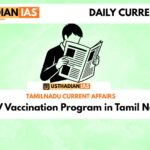India’s overall progress
India’s Urban Sustainability and SDG 11 Progress: India ranked 99th among 167 countries in the Sustainable Development Report 2025. Despite this improvement, progress on SDG 11, which targets inclusive, safe, resilient and sustainable cities, remains slow. Urban challenges persist in housing, water supply, air quality, and financial sustainability of local governments.
Static GK fact: SDG 11 was adopted in 2015 as part of the UN 2030 Agenda for Sustainable Development.
Key indicators of SDG 11
The four main indicators are slum population, PM 2.5 levels, piped water access, and public transport. India’s performance has stagnated in reducing slum population and improving air quality. In 2025, piped water access declined further, with only 65% of households connected. Many cities, including Mumbai, provide water for just a few hours daily, forcing households to treat contaminated water before use.
Static GK fact: WHO safe air quality standard for PM 2.5 is 5 µg/m³, while Indian cities often record levels above 50 µg/m³.
Urban slum conditions
Nearly half of slum households live in non-pucca houses with irregular services. Water supply is far below the government norm of 135 litres per person per day. In Mumbai slums, availability is only 45 litres per person. Slum dwellers often pay up to thirty times more for tanker water. Overcrowding, poor sanitation and insecure tenure deepen inequalities.
Environmental and disaster risks
Urban poor remain highly exposed to pollution, flooding, and climate hazards. Inadequate infrastructure worsens the impact of extreme events like monsoon floods and landslides. These shocks cause loss of income and health problems, pushing vulnerable groups deeper into poverty. Building resilience remains weak in most cities.
Governance and financial limits
Urban governance in India is constrained as cities lack autonomy and revenue powers. States dominate policymaking and funding. Over half of municipal corporations cannot even cover half their expenditure from their own revenues. Smaller cities face greater challenges in attracting private investment or capital finance.
Static GK Tip: The 74th Constitutional Amendment, 1992, empowered Urban Local Bodies but fiscal powers remain limited.
Urban development programmes
Schemes like JNNURM and Smart City Mission largely prioritised commercial hubs over basic services. Less than 20% of Smart City projects focus on water, sanitation, or health. Affordable housing remains critical. While PMAY-U provides subsidies, many low-income families are excluded due to credit barriers. The launch of PMAY-U 2.0 with credit risk guarantees aims to widen inclusivity.
Public participation in planning
The 74th Constitutional Amendment mandates Ward Committees to ensure citizen participation. However, these remain weak or inactive in most cities. Smart City initiatives often prioritise elite interests through online platforms. Without active local engagement, urban planning risks being unresponsive to community needs.
Policy directions
Greater public investment, fiscal empowerment of cities, and people-centric planning are necessary. Regulations must safeguard the poor from exploitative private financing. Strengthening ward-level participation can integrate local knowledge into urban planning. Building inclusive, resilient, and equal cities is vital to achieving SDG 11 targets.
Static Usthadian Current Affairs Table
India’s Urban Sustainability and SDG 11 Progress:
| Topic | Detail |
| India’s SDR 2025 rank | 99th among 167 countries |
| Goal of SDG 11 | Inclusive, safe, resilient, sustainable cities |
| Share of urban households with piped water (2022) | 65% |
| Mumbai average water supply | Just over 5 hours daily |
| Slum water supply norm | 45 litres per person daily vs 135 litres norm |
| Extra cost of tanker water in slums | Up to 30 times higher |
| Smart City projects in water, sanitation, health | Less than 20% |
| PMAY-U 2.0 feature | Credit risk guarantees for inclusion |
| Municipal revenue crisis | Over 50% corporations cannot meet half their expenses |
| Key constitutional reform | 74th Constitutional Amendment, 1992 |








